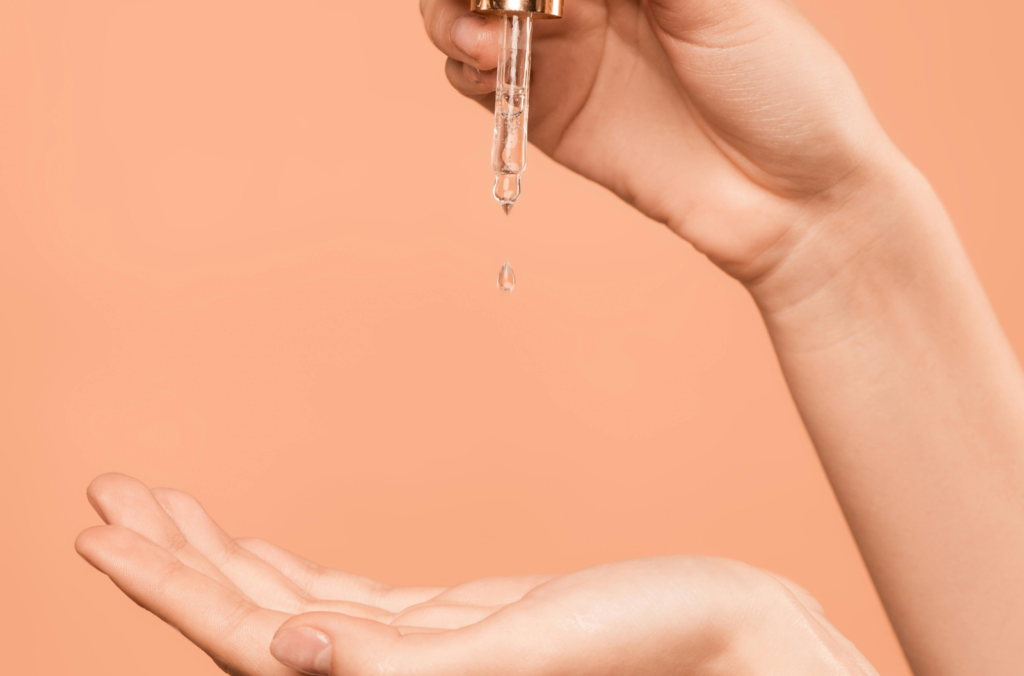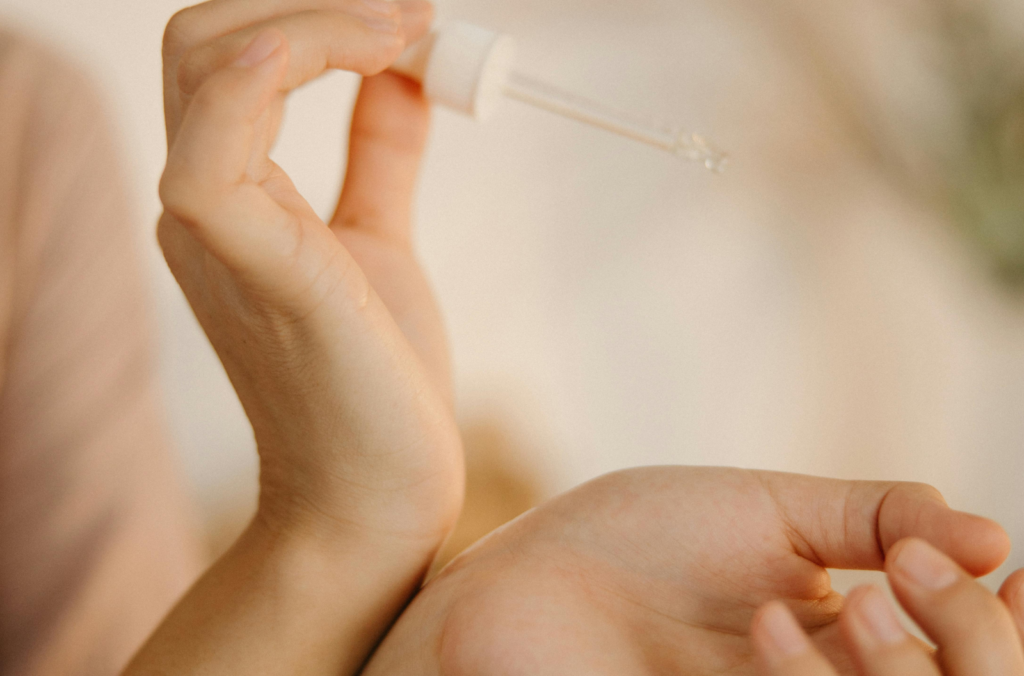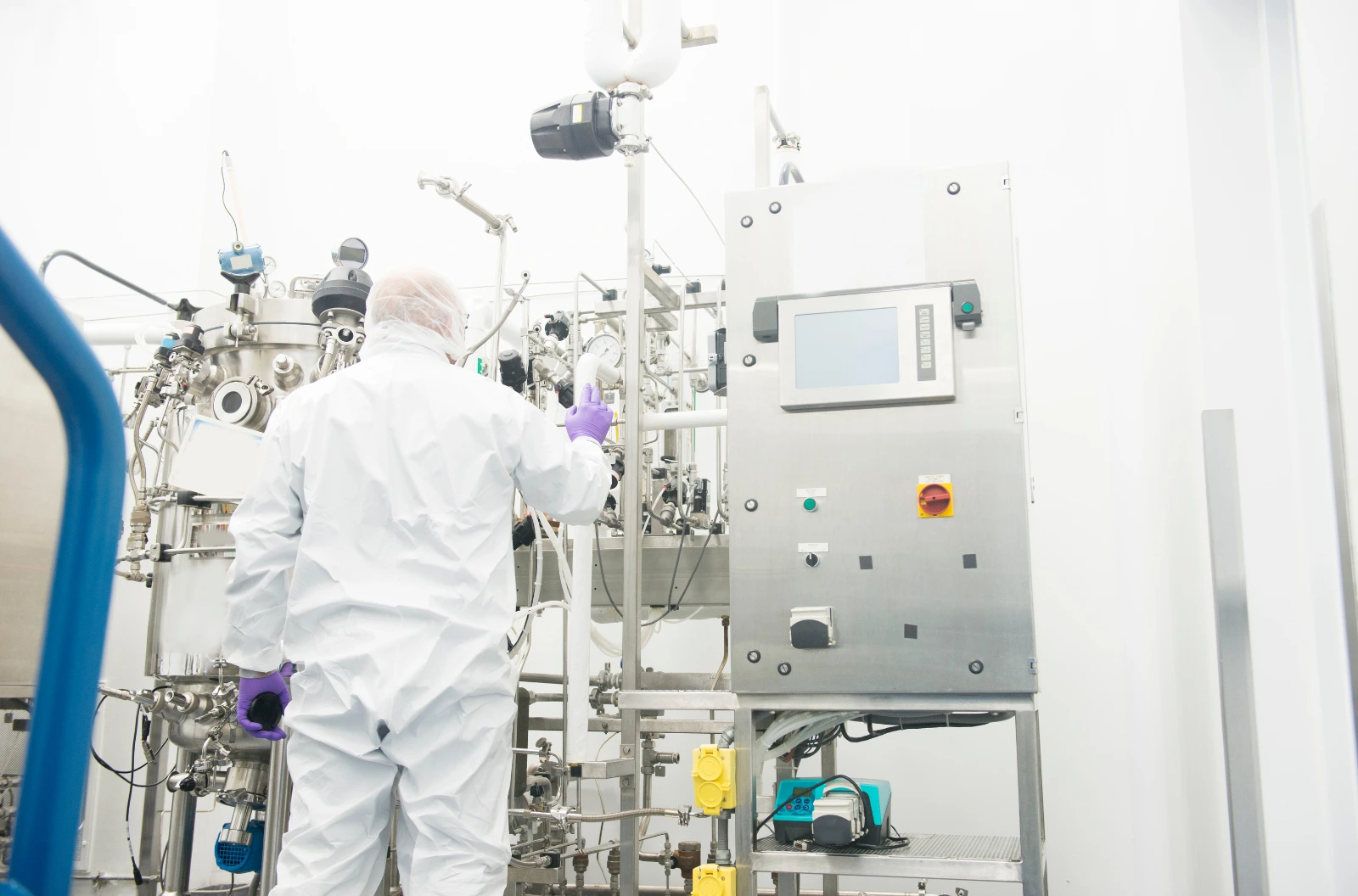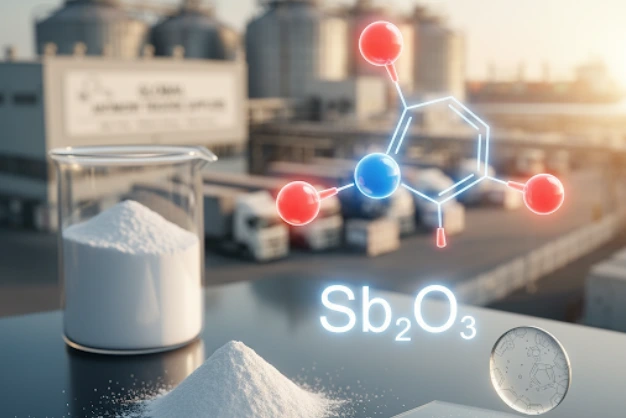What is a Serum?
Difference Between Serum, Essence, and Ampoule
- Essence: A lightweight, watery product that preps the skin for better absorption of serums. It provides an initial layer of hydration but is less concentrated in actives than a serum.
- Serum: More potent than essence, designed to address specific skin issues with targeted ingredients. Serums are often applied after cleansing and toning, before moisturizing, to deliver actives deep into the skin.
- Ampoule: The most concentrated product among the three. Ampoules contain higher doses of active ingredients, usually used for short-term, intensive treatments targeting acute skin problems.
Importance of Serum Formulation in Skincare
- Targeted Treatment: They focus on specific concerns like acne, fine lines, or dull skin.
- Enhanced Penetration: With small molecular structures, serums penetrate deeper into the skin than creams.
- Lightweight Feel: Perfect for layering under other skincare products without feeling heavy or greasy.


Key Components of Serum Formulation
Active Ingredients and Their Functions
- Mechanism of Action: Acts as an antioxidant, neutralizing free radicals caused by UV exposure. It also inhibits melanin production, reducing hyperpigmentation.
- Challenges in Formulation: Vitamin C is highly unstable and prone to oxidation when exposed to air or light. It requires a low pH environment (below 3.5) to remain active.
- Solution: Use derivatives such as ascorbyl glucoside or tetrahexyldecyl ascorbate, which are more stable but less potent, or stabilize L-ascorbic acid with ferulic acid School of Natural Skincare Formula Botanica.
- Ideal Usage: Concentrations between 10-20% deliver maximum benefits without causing irritation.
- Mechanism: Stimulates cellular turnover, increases collagen production, and helps reduce fine lines and acne scars.
- Formulation Considerations: Retinol oxidizes easily and can degrade when exposed to light. Encapsulation methods or packaging in opaque containers can mitigate these issues.
- Usage Guidelines: Retinol concentrations range from 0.25% to 1%, depending on the skin type. It should be combined with moisturizing agents such as squalane or ceramides to reduce dryness and irritationHumblebee & Me.
- Types: Available in low molecular weight (deep skin penetration) and high molecular weight (surface hydration) forms.
- Action: Binds water to the skin, providing hydration and improving elasticity.
- Formulation Tip: HA works best when applied to damp skin, as it attracts moisture from the environment.
- Optimal Use: Concentrations of 1-2% offer a non-sticky, lightweight finish. Higher concentrations may lead to a tacky residue Humblebee & Me School of Natural Skincare.
- Mechanism: Regulates sebum production, strengthens the skin barrier, and reduces inflammation.
- Formulation Tip: It is pH-stable across a broad range (5-7), making it easy to incorporate into various serum types.
- Usage: Effective at 2-5%. Higher doses may cause temporary redness but provide enhanced benefits for acne-prone or oily skin Create Cosmetic Formulas.
Base Ingredients and Carriers
- Function: Water serves as the primary solvent for hydrophilic ingredients such as hyaluronic acid, glycerin, and certain peptides.
- Common Additions: Floral waters (e.g., rose hydrosol) or aloe vera juice enhance the sensory feel and offer additional skin benefits.
- Formulation Note: Water-based serums require preservatives since water increases the risk of microbial growth School of Natural Skincare.
- Examples: Jojoba oil (mimics skin sebum), rosehip oil (rich in essential fatty acids), and squalane (lightweight, non-greasy).
- Usage: Oil carriers dissolve lipophilic actives like retinol and create protective barriers to lock in moisture.
- Compatibility Tip: Ensure oils are non-comedogenic to avoid clogging pores, especially for acne-prone users Create Cosmetic Formulas.
Emulsifiers and Solubilizers
- Examples: Olivem 1000, Montanov 68, and cetyl alcohol.
- Mechanism: They stabilize formulations by reducing surface tension between water and oil molecules.
- Formulation Tip: The ratio of oil to water affects the viscosity and texture of the serum. A common ratio for oil-in-water emulsions is 3:1 Formula Botanica.
- Examples: Polysorbate 20 and PEG-40 hydrogenated castor oil.
- Usage: Ideal for incorporating essential oils and aromatic components into aqueous solutions without destabilizing the formula.
Preservatives and Antimicrobials
- Examples: Phenoxyethanol (broad-spectrum preservative) and Liquid Germall Plus (effective in water-based serums).
- Formulation Note: Preservative concentrations must follow regulatory guidelines—typically between 0.5% and 1% to avoid skin irritation.
- Examples: Ethylhexylglycerin and caprylyl glycol.
- Usage: These compounds act as preservative boosters, extending shelf life by reducing microbial growth over time.
Step-by-Step Process of Making a Serum
Phase Division
Water Phase Ingredients
- Hyaluronic Acid: A polysaccharide known for holding up to 1,000 times its weight in water, it requires careful handling since it clumps easily. It is pre-mixed into a solution before adding to the main water phase.
- Panthenol (Vitamin B5): This water-soluble vitamin improves skin hydration and accelerates healing. It dissolves fully in distilled water but needs stirring for 15-20 minutes to prevent settling.
- Glycerin: A hygroscopic compound that draws moisture from the environment into the skin, glycerin is added in percentages ranging from 3% to 10%, depending on the serum type (lightweight or intensive hydration).
Oil Phase Ingredients
- Carrier Oils: Oils such as jojoba, argan, or rosehip provide skin nourishment and help deliver fat-soluble actives deep into the skin. These oils need to be chosen carefully, considering the comedogenic index to avoid clogging pores.
- Emulsifiers: Compounds like Polysorbate 20 or Cetearyl Alcohol ensure the oil and water phases blend smoothly. Emulsifiers work by reducing the surface tension between water and oil droplets.
- Oil-Soluble Actives: Ingredients like Vitamin E (tocopherol) are added to this phase to enhance antioxidant protection. They stabilize the formulation and extend its shelf life by minimizing oxidation.
Heating and Mixing the Phases
Heating the Water Phase
- Why Heating Matters: Some ingredients, such as xanthan gum or certain peptides, only activate or dissolve completely at elevated temperatures.
- Method: The water phase is placed on a water bath or magnetic stirrer with a heating plate. Stirring ensures the heat is distributed evenly throughout the solution. Careful monitoring with a digital thermometer prevents overheating, which could degrade sensitive actives.
Heating the Oil Phase and Adding Emulsifiers
- Melting Oils and Emulsifiers: Carrier oils and emulsifiers are melted together at the same 70°C temperature. High-melting-point emulsifiers, such as cetearyl alcohol, require longer heating times, so the mixture must be stirred continuously to avoid clumping.
- Mixing Equipment: A high-shear mixer or an overhead stirrer is typically used to ensure uniform dispersion of emulsifiers throughout the oil phase. High-shear mixers generate forceful mechanical shear, breaking down particles and enhancing emulsifier efficiency.
Combining the Phases
Step-by-Step Process for Combining Phases
- Slow Pouring: The oil phase is poured in a thin stream into the water phase while the mixture is continuously stirred. This gradual introduction allows the emulsifiers to encapsulate the oil droplets, preventing separation.
- Use of Homogenizers: A high-speed homogenizer breaks the oil into microscopic droplets, dispersing them evenly throughout the water. This step ensures that the final serum has a smooth, non-greasy texture. The goal is to create an emulsion where the oil droplets are smaller than 500 nanometers—ideal for skin absorption and product stability.
- Temperature Monitoring: The mixture must maintain a temperature of 60°C-70°C during this process. If the temperature drops too soon, the oil may congeal, disrupting emulsification and causing separation over time.
- Initial Stability Check: After combining, a flash stability test is conducted by placing a small amount of the mixture in a refrigerator for 10-15 minutes to ensure no phase separation occurs.
Adjusting pH and Viscosity
pH Adjustment
- Target pH: The optimal pH range for most serums is 4.5 to 5.5, aligning with the skin’s slightly acidic nature. This protects the skin barrier and ensures the serum feels comfortable without causing irritation.
- Adjusting the pH: Small amounts of citric acid (acidic) or sodium hydroxide (alkaline) are added drop by drop, followed by constant stirring to integrate them fully. Adjustments must be gradual to avoid sudden shifts in pH, which could destabilize sensitive ingredients like peptides or vitamin C derivatives.
Viscosity Adjustment
- Viscosity Enhancers: Ingredients like xanthan gum or Carbopol are dissolved in glycerin or water to prevent clumping before being introduced to the formulation. Xanthan gum provides a smooth glide without stickiness, while Carbopol creates a more gel-like consistency ideal for intensive treatments.
- Application of Shear Force: A homogenizer or mechanical stirrer is used again after adding viscosity enhancers. This ensures the thickening agents are uniformly distributed and don’t form lumps or uneven textures.


Types of Serum Formulations
Water-Based Serums
Formulation Breakdown
- Humectants (3-5%): Compounds like hyaluronic acid and glycerin bind moisture to the skin. Formulators need to control the molecular weight of hyaluronic acid—low molecular weight penetrates deeper but can cause inflammation if overused, while high molecular weight remains on the skin’s surface, offering plumping effects.
- Chelating Agents (0.1-0.5%): Ingredients like disodium EDTA prevent metal ion contamination, which can destabilize the product over time.
- pH Buffer (4.5-5.5): Water-based serums are adjusted to a slightly acidic pH using lactic acid or citric acid, ensuring compatibility with the skin’s acid mantle.
Texture Control
Production Insight
Oil-Based Serums
Formulation Breakdown
- Base Oils (60-80%): Carrier oils such as squalane, jojoba, or evening primrose oil are chosen for their specific fatty acid profiles. Jojoba oil, structurally similar to human sebum, enhances bioavailability, while evening primrose oil, rich in gamma-linolenic acid, helps with skin inflammation.
- Active Lipids (5-10%): Ceramides or fatty acid complexes are incorporated to strengthen the skin’s lipid matrix. Ceramide NP, for example, works to rebuild compromised skin barriers.
- Antioxidants (1-3%): Vitamin E or coenzyme Q10 protects oils from oxidation and provides anti-aging benefits by neutralizing free radicals.
Texture Control
Production Insight
Gel-Based Serums
Formulation Breakdown
- Gelling Agents (1-3%): Carbomer or xanthan gum is used to create a transparent gel matrix. The concentration of these agents is crucial—too little, and the gel will lack structure; too much, and it will feel sticky.
- Anti-Inflammatory Actives (0.5-2%): Ingredients like bisabolol (from chamomile) or allantoin help calm irritated skin and reduce redness.
- Moisture Retention Actives: Aloe vera juice and beta-glucan are common hydrating components, providing water-binding properties without heavy oils.
Texture Control
Production Insight
Emulsified Serums
Formulation Breakdown
- Water Phase (50-60%): Includes humectants like hyaluronic acid and glycerin to attract water to the skin.
- Oil Phase (20-30%): Incorporates lightweight oils like squalane to prevent greasiness.
- Emulsifiers (1-5%): Polysorbate 20 or glyceryl stearate is essential for maintaining a stable emulsion by lowering interfacial tension between oil and water droplets.
Texture Control
Production Insight
Biphase Serums
Formulation Breakdown
- Water Phase: Contains hydrating components like aloe vera extract and sodium PCA to replenish moisture.
- Oil Phase: Uses non-greasy oils such as camellia seed oil to deliver nutrients and form a protective layer.
- Stabilizers: Lecithin is often added to slow the separation process, ensuring the two phases stay stable during storage.
Texture Control
Production Insight
Testing and Quality Control
Stability Testing
Phase Separation Check
- Testing Method: The serum is stored under varying temperatures (typically 4°C, 25°C, and 40°C) for 3 to 6 months to simulate real-world storage conditions. Periodic visual inspections are conducted to identify layering, clumping, or precipitation of ingredients.
- Centrifugation Test: Some laboratories perform centrifugation (at 3000-5000 RPM) to accelerate the separation process and identify potential issues earlier.
pH Consistency Check
- Testing Method: Regular pH measurements are taken over a period of months using a calibrated pH meter. Changes beyond 0.2 units can signal ingredient incompatibility or microbial contamination.
- Buffer Optimization: In cases where pH drift is observed, buffers such as sodium citrate may be adjusted to stabilize the formula.
Appearance and Texture Evaluation
- Light Exposure Testing: The product is exposed to UV light (to simulate sunlight) and checked for oxidation effects or discoloration. For example, oils rich in Vitamin C may darken if exposed to light.
- Temperature Cycling: Products are subjected to repeated cycles between extreme temperatures (e.g., from -10°C to 40°C) to mimic storage in different climates. This helps detect any phase shifts or texture changes early on.
Microbial Testing
Preservative Efficacy Testing (PET)
- Testing Method: A controlled amount of bacteria, yeast, and mold (e.g., Staphylococcus aureus, Pseudomonas aeruginosa, and Candida albicans) is intentionally introduced into the product. The serum is incubated, and microbial levels are measured over time to confirm that the preservative can eliminate or inhibit microbial growth within a specific timeframe (typically 28 days).
- Preservative Optimization: If microbial counts exceed acceptable limits, the formulation may require preservative adjustments or the addition of secondary antimicrobial agents, such as caprylyl glycol.
Routine Microbial Testing
- Method: Samples are plated on agar media and incubated for 24 to 72 hours to identify any microbial colonies. Water-based serums often undergo more frequent testing since they are more prone to contamination than oil-based products.
- Regulatory Compliance: Most formulations must meet USP 51 or European Pharmacopoeia (EP) standards, which specify allowable microbial limits.
Air and Equipment Hygiene
Compatibility Testing
Ingredient Stability Assessment
- Method: Samples are stored under controlled conditions, and High-Performance Liquid Chromatography (HPLC) is used to measure the concentration of each active ingredient over time. If a drop in potency is detected, formulation adjustments are required.
- Encapsulation Techniques: In cases where stability is an issue, actives may be encapsulated in liposomes or cyclodextrins to protect them from degradation.
Interaction Checks Between Ingredients
- Method: Formulation chemists test ingredient combinations across different pH ranges to ensure stability. If conflicts arise, layered delivery systems may be employed to keep ingredients separated until application.
Packaging Compatibility
- Method: The serum is stored in various packaging materials—glass, PET bottles, or airless pumps—and observed for chemical leaching, discoloration, or loss of potency over time. Packaging must be optimized to preserve the integrity of sensitive ingredients.
Looking for Customized Formulation Solutions?
Packaging and Storage Recommendations
Appropriate Containers
Airtight Glass Bottles with Droppers
- Material: Borosilicate or amber-colored glass bottles are typically used for serums containing light-sensitive ingredients like Vitamin C or retinol.
- Benefits: Glass is inert and does not react with ingredients, preventing leaching or contamination. Amber-tinted glass further protects the contents from UV light, which can destabilize sensitive ingredients.
- Dropper Mechanism: The dropper minimizes product exposure to air and is ideal for precise dosing. However, each use introduces minimal air exposure, which can accelerate oxidation in certain formulations.
- Usage Insight: To prevent contamination, users must avoid touching the dropper directly to the skin during application.
Airless Pumps
- Mechanism: Airless pumps use a vacuum system to dispense the serum without introducing air into the container. As the pump is used, an inner piston moves upward, minimizing headspace and preventing air from re-entering.
- Best For: Airless pumps are recommended for serums containing antioxidants or peptides, which are highly prone to oxidation. They also eliminate the need for preservatives in some formulations, making them suitable for sensitive skin products.
- Material Consideration: Polyethylene terephthalate (PET) or high-density polyethylene (HDPE) is often used for airless pump containers. These plastics are non-reactive and compatible with most oil- or water-based serums.
Serum Vials with Rubber Stoppers
- Usage: Vials sealed with rubber stoppers and crimp caps are often used for serums with short shelf lives or active ingredients that degrade quickly after exposure to air (e.g., Vitamin C serums).
- Benefits: This packaging type is typically used for professional-grade or clinical serums. Some formulations require refrigeration and are provided in single-use vials to ensure maximum potency.
Storage Guidelines
Avoid Exposure to Light
- Impact of UV Radiation: Light-sensitive ingredients like Vitamin C, ferulic acid, and niacinamide degrade when exposed to UV rays, resulting in loss of potency and product discoloration.
- Packaging and Storage Solutions: Store serums in amber or opaque bottles and keep them in a cool, dark place. For products that are highly unstable, such as L-ascorbic acid serums, it is recommended to store them inside a lightproof box.
Temperature Control
- High Temperatures: Excessive heat can accelerate chemical reactions, causing phase separation and ingredient breakdown. Ingredients like retinol or certain peptides lose efficacy when exposed to temperatures above 25°C (77°F).
- Cold Storage: Some professional-grade or highly sensitive serums (e.g., probiotic or enzymatic serums) require refrigeration at 2-8°C (35-46°F) to maintain activity. However, not all serums benefit from refrigeration—some water-in-oil emulsions may destabilize if exposed to low temperatures.
- Guidance: Store the product in a temperature-controlled environment away from heat sources, such as radiators or direct sunlight, to maintain optimal texture and performance.
Humidity Management
- Humidity Impact: Excess moisture can lead to microbial contamination, especially in water-based serums. In environments with high humidity, even airtight containers can suffer from moisture ingress, potentially compromising preservative systems.
- Solution: Store serums in cool, dry places and use silica gel desiccants inside packaging to absorb moisture. Avoid storing serums in bathrooms, where humidity levels are typically high due to steam and condensation.
Shelf-Life Indicators
General Shelf-Life Recommendations
- 12-18 Months: Serums containing retinol, Vitamin C derivatives, or fruit acids generally have a shorter shelf life due to the instability of these active ingredients. These products often include expiration dates on the packaging to guide consumers.
- 24 Months or Longer: Serums with a higher concentration of oil-based ingredients or those that rely on encapsulated actives tend to have longer shelf lives. For example, a hyaluronic acid serum with minimal preservatives can last up to 24 months if stored correctly.
Signs of Expiration or Degradation
- Color Change: A serum containing Vitamin C might shift from clear to amber, indicating oxidation. Similarly, a serum with retinoids may develop a stronger odor if it degrades.
- Texture Shift: A change in viscosity, such as thickening or thinning, may indicate phase separation or the breakdown of thickeners like xanthan gum or Carbopol.
- Separation or Precipitation: Oil and water phases separating in emulsified serums signal that the emulsifier system has failed, rendering the product ineffective.
Preservative Efficacy and Use-By Dates
- Open Jar Symbol (PAO): Many serums feature a Period After Opening (PAO) symbol, indicating how long the product remains effective once opened. For example, a “6M” inside a jar symbol means the product should be used within 6 months of opening.
- Batch Testing and Re-Evaluation: Some manufacturers perform ongoing stability testing on stored samples to confirm that products remain within specification for their entire shelf life. This ensures that even long-lasting serums retain their intended potency.
Common Challenges in Serum Formulation
Phase Separation Issues
Problem
Causes
- Inadequate emulsifier concentration: Insufficient emulsifiers fail to stabilize the oil droplets in water-based formulations.
- Inconsistent mixing: Poor shear mixing during production can leave oil droplets too large to stay evenly dispersed.
- Temperature fluctuations: Rapid cooling after emulsification can destabilize the product, causing separation over time.
Solutions
- Use High-Quality Emulsifiers: Choose emulsifiers with a high Hydrophilic-Lipophilic Balance (HLB) value appropriate for the specific oil and water phases. For example, Polysorbate 80 is ideal for high oil content, while Lecithin works well for light emulsions.
- Incorporate Co-Emulsifiers: Adding secondary emulsifiers, such as cetearyl alcohol, can further stabilize the emulsion by thickening the water phase and reducing interfacial tension.
- Precise Temperature Control: Both the oil and water phases should be heated to around 70°C and mixed using high-shear mixers to ensure stable emulsification. Gradual cooling is essential—placing the serum under a controlled cooling process avoids crystallization or phase shifts.
pH Incompatibility
Problem
Causes
- Buffer system failure: Weak buffers may fail to maintain pH stability over time.
- Incompatible actives: Some ingredients, such as ascorbic acid and niacinamide, are chemically unstable together due to conflicting pH requirements.
Solutions
- Incorporate Stabilizers: Add stabilizers such as sodium ascorbyl phosphate (a more stable Vitamin C derivative) to maintain potency even at slightly higher pH levels.
- Use Buffer Systems: Implement buffer solutions, such as citrate buffer, to keep the pH within the optimal range. For example, Vitamin C serums should ideally maintain a pH of 3.0 to 3.5 for efficacy without causing irritation.
- Layered Formulations: For complex formulas involving actives with conflicting pH needs, use layered application strategies—one ingredient is applied first, followed by another product after a waiting period, rather than mixing them in a single formula.
Oxidation of Actives
Problem
Causes
- Exposure to air: Frequent opening of containers allows oxygen to degrade actives.
- Inadequate packaging: Transparent containers expose sensitive ingredients to UV light, accelerating oxidation.
- Heat exposure: High temperatures destabilize antioxidants, leading to rapid degradation.
Solutions
- Use Airless Packaging: Airless pumps prevent oxygen from entering the container, significantly slowing the oxidation of sensitive ingredients. This is especially useful for Vitamin C serums and retinol-based formulations.
- Add Antioxidants: Include stabilizing antioxidants like Vitamin E (tocopherol) or ferulic acid to delay oxidation. These antioxidants work synergistically with actives, such as Vitamin C, to enhance their stability and prolong shelf life.
- Incorporate Encapsulation Technology: Encapsulate sensitive ingredients in liposomes or microcapsules to protect them from environmental exposure until the moment of application.
- Refrigeration for Highly Reactive Actives: Some unstable formulations, like L-ascorbic acid serums, benefit from cold storage at 2-8°C, which slows the oxidation process.
Enhance Your Product Line with Expert Formulations
Safety and Regulatory Compliance
Compliance with Industry Standards
European Union (EU) Cosmetic Regulations
- Product Information File (PIF): In the EU, every cosmetic product must have a PIF containing detailed formulation data, including safety assessments, Good Manufacturing Practice (GMP) compliance, and stability studies.
- Safety Assessment: A certified cosmetic safety assessor must evaluate the final formulation to ensure that it meets all safety standards. The assessor examines ingredient concentrations, toxicology data, and interactions between components.
- Cosmetic Product Notification Portal (CPNP): Before launching in the EU market, the product must be registered on the CPNP platform to ensure full transparency and accountability.
FDA Guidelines for Cosmetics
- Ingredient Disclosure: In the U.S., the FDA requires full disclosure of ingredients on product labels in descending order of concentration. This ensures transparency for consumers and helps prevent allergic reactions.
- Misbranding and Adulteration: Products must not make false claims (e.g., anti-aging claims without clinical evidence) or contain harmful substances. The FDA monitors these factors, and non-compliance may result in product recalls.
- Voluntary Cosmetic Registration Program (VCRP): While not mandatory, registering products under the VCRP signals a manufacturer’s commitment to transparency and safety.
Patch Testing Guidelines
Patch Testing Procedure
- Selection of Participants: Patch tests are typically conducted on a panel of volunteers with varied skin types—including sensitive, oily, and dry skin—to assess compatibility across different demographics.
- Application Method: A small amount of the serum is applied to the inner forearm or behind the ear, areas where the skin is thinner and more reactive. The product is left on the skin for 24 to 48 hours without being washed off.
- Negative Result: If no reaction occurs, the product is generally deemed safe for broader use.
- Positive Result: If redness or itching is observed, further formulation adjustments are needed. This might include reducing concentrations of active ingredients or modifying preservatives.
Guidelines for Sensitive Skin Products
Preservative Limits and Allergen Warnings
Preservative Limits
- EU Cosmetic Regulation: Annex V of EC No. 1223/2009 lists allowed preservatives and their maximum concentrations. For example, phenoxyethanol is permitted up to 1%, and methylparaben is allowed at a maximum of 0.4% in leave-on products.
- FDA Guidelines: While the FDA does not impose specific preservative limits, manufacturers must demonstrate that the preservative system is effective and non-toxic through Preservative Efficacy Testing (PET).
Allergen Warnings
- EU Allergen List: The EU mandates the declaration of 26 common allergens if they are present above 0.001% in leave-on products or 0.01% in rinse-off products. These allergens include linalool, limonene, and geraniol, commonly found in essential oils.
- FDA Requirements: In the U.S., any product containing potential allergens must disclose them on the ingredient list. Failure to declare allergens may result in consumer complaints, regulatory actions, or product recalls.
Fragrance-Free and Hypoallergenic Products
Where Can I Find Reliable Partners for Formulation Development?
RawSource: Your Partner for Reliable and High-Quality Formulations
Finding the right formulation partner can make all the difference in product development and market success. At RawSource, we bring unparalleled expertise, quality ingredients, and comprehensive support to every formulation project. With a deep understanding of the beauty, personal care, and specialty chemicals industries, RawSource is committed to helping brands achieve exceptional results in every batch.
Why Choose RawSource for Your Formulation Needs?
- Specialized Ingredients for Formulations: RawSource provides key formulation ingredients such as emulsifiers, stabilizers, and actives, essential for creating effective and stable serum and moisturizer formulations.
- Custom Formulation Blending: Our team offers custom blending services, ensuring formulations meet precise specifications and perform consistently across batches.
- In-Depth Formulation Guidance: RawSource offers technical support on formulation challenges, from ingredient compatibility to stability testing, helping you achieve ideal product textures and efficacy.
- Quality-Controlled Ingredients: We rigorously test all formulation ingredients to meet industry standards, ensuring safe, high-quality components that enhance product integrity.
- Rapid Sample Development for Formulation Testing: With a streamlined process, RawSource can quickly provide sample formulations for testing, accelerating your product development timelines.
- Regulatory Compliance Support: RawSource ensures that all formulation ingredients comply with global standards, simplifying regulatory requirements for product launches.
- Supply Chain Reliability: Our secure warehousing and efficient logistics ensure uninterrupted access to essential ingredients, maintaining consistency in every batch.
Choosing RawSource as your formulation partner means gaining access to a trusted team that’s invested in your success. We’re more than a provider of raw materials; we’re a dedicated partner in every step of the formulation journey. Whether you’re launching a new skincare line, developing a specialty chemical, or enhancing an existing product, RawSource provides the expertise, reliability, and innovation needed to help you excel.
FAQs
What are the key ingredients in a serum formulation?
Serums typically contain a mix of active ingredients such as hyaluronic acid, Vitamin C, peptides, antioxidants, and plant extracts. These ingredients are designed to target specific skin concerns, offering hydration, nourishment, or anti-aging benefits.
How is the water and oil phase combined in serum formulation?
The oil phase is gradually added into the water phase at a controlled temperature (around 70°C) using high-shear mixers. This process ensures proper emulsification, preventing phase separation, and creating a smooth, stable serum.
What type of packaging is best for serums to prevent oxidation?
Airless pumps and amber glass bottles with droppers are ideal for serums. These containers protect the formula from exposure to air and light, which can degrade sensitive ingredients like Vitamin C or retinol.
How can formulators ensure a serum is stable and safe?
Serums undergo stability testing to check for phase separation, pH consistency, and texture changes. Microbial testing ensures the serum is free from harmful bacteria, and compatibility testing confirms that active ingredients remain effective over time.
What is the typical shelf life of a serum, and how should it be stored?
The shelf life of a serum ranges from 12 to 24 months, depending on the ingredients and preservative system. To maintain stability, serums should be stored in cool, dry places away from direct sunlight and excessive heat.





